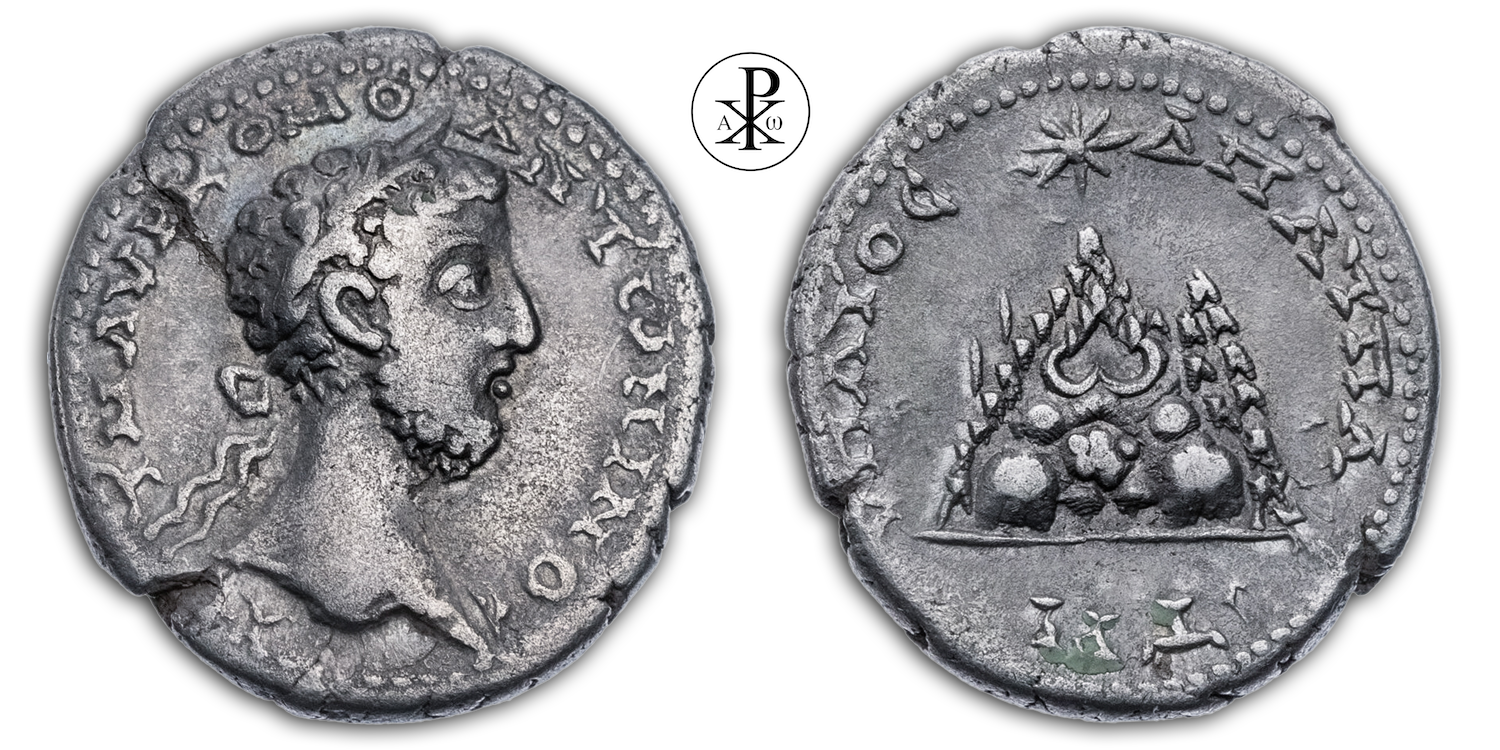Imperator Caesar Marcus Aurelius Commodus Antoninus Augustus
Reign: Commodus
Mint: Caesarea Eusebia, Cappadocia
Date: 183/185 AD
Nominal: Drachm
Material: Silver
Diameter: 19mm
Weight: 4.57g
Reference: RPC IV.3 7130
Reference: Metcalf 155f
RPC Online: https://rpc.ashmus.ox.ac.uk/coins/4/7130
Rare: Specimens 14 (4 in the core collections)
Provenance: Kölner Münzkabinett, Germany
Pedigree: –
Obverse: Laureate head of Commodus right
Inscription: ΑΥΤ Μ ΑΥΡ ΚΟΜΟ ΑΝΤⲰΝΙΝΟϹ
Translation: Autokrator Marcos Aurelios Komodos Antoninos
Translation: Imperator Marcus Aurelius Commodus Antoninus
Reverse: Mount Argaeus with trees; above a star
Inscription: ΥΠΑΤΟϹ Δ ΠΑΤ ΠΑΤΡΙ
Translation: Upatos Delta Pateras Patridos
Translation: Consul Quartum [Consul for the fourth time], Pater Patriae [Father of the Country]
Comment: Caesarea, named in honour of the Roman Emperor Tiberius; Greek Kaisareia, previously Mazaka or Eusebeia, is the capital of the province of the same name, Kayseri, in Cappadocia in Turkey. According to Strabon, the city was still unfortified and surrounded by predatory tribes in his time. The surrounding land was barren, sandy and stony, the city itself “waterless”. Numerous “fire pits” seem to have survived from the volcanic activity around Mount Argaeus at that time. Around 77 BC, the city was captured for the second time by the Armenian Great King Tigranes II, who once again had numerous inhabitants deported to his new capital Tigranokerta in northern Mesopotamia. Only after the conquest of this place by the Romans under Pompeius (69 BC) could the resettled population return. With the death of its last king Archelaos, Cappadocia lost its independence in 17 AD and was transformed into the Roman province of Cappadocia under Emperor Tiberius. Mazaka-Eusebeia now served as the provincial capital and was given the name Caesarea (Greek Kaisáreia). After the division of Cappadocia under Emperor Valens, Caesarea was the capital of Cappadocia prima.
Mount Argaeus (modern Erciyes) is a dormant volcano about 3917 m high in Turkey. It is located 25 km south of Caesarea in Cappadocia. Erciyes is the adoption into Turkish of the Greek name Argaios (Greek: Ἀργαίος). The latinized form is Argaeus (a rarely encountered alternative latinization was Argaeas mons, Argeas mons). The Greek name has the meaning of “bright” or “white”; as applied to the mountain, it may have been eponymous of Argaeus I (678 – 640 BC), king of Macedon and founder of the Argead dynasty. The mountain was and is a landmark of Caesarea. In his description of the surroundings of Caesarea, the geographer Strabon reported plains littered with fire pits where flames burst from the ground at night. According to Strabo, there were still sulphurous hot water vapours at Mount Argaeus in his time (54 BC to AD 19). The mountain was still occasionally depicted on the backs of coins for the Greek-minted provinces in Roman times – as on this coin presented here.
